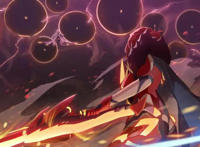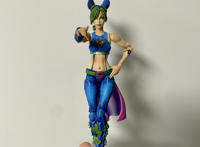疯狂山脉(I)(4)
Our borings, of varying depth according to the promise held out by the upper soil or rock, were to be confined to exposed or nearly exposed land surfaces—these inevitably being slopes and ridges because of the mile or two-mile thickness of solid ice overlying the lower levels. We could not afford to waste drilling depth on any considerable amount of mere glaciation, though Pabodie had worked out a plan for sinking copper electrodes in thick clusters of borings and melting off limited areas of ice with current from a gasoline-driven dynamo. It is this plan—which we could not put into effect except experimentally on an expedition such as ours—that the coming Starkweather-Moore Expedition proposes to follow despite the warnings I have issued since our return from the antarctic.
The public knows of the Miskatonic Expedition through our frequent wireless reports to the Arkham Advertiser and Associated Press, and through the later articles of Pabodie and myself. We consisted of four men from the University—Pabodie, Lake of the biology department, Atwood of the physics department (also a meteorologist), and I representing geology and having nominal command—besides sixteen assistants; seven graduate students from Miskatonic and nine skilled mechanics. Of these sixteen, twelve were qualified aëroplane pilots, all but two of whom were competent wireless operators. Eight of them understood navigation with compass and sextant, as did Pabodie, Atwood, and I. In addition, of course, our two ships—wooden ex-whalers, reinforced for ice conditions and having auxiliary steam—were fully manned. The Nathaniel Derby Pickman Foundation, aided by a few special contributions, financed the expedition; hence our preparations were extremely thorough despite the absence of great publicity. The dogs, sledges, machines, camp materials, and unassembled parts of our five planes were delivered in Boston, and there our ships were loaded. We were marvellously well-equipped for our specific purposes, and in all matters pertaining to supplies, regimen, transportation, and camp construction we profited by the excellent example of our many recent and exceptionally brilliant predecessors. It was the unusual number and fame of these predecessors which made our own expedition—ample though it was—so little noticed by the world at large.
The public knows of the Miskatonic Expedition through our frequent wireless reports to the Arkham Advertiser and Associated Press, and through the later articles of Pabodie and myself. We consisted of four men from the University—Pabodie, Lake of the biology department, Atwood of the physics department (also a meteorologist), and I representing geology and having nominal command—besides sixteen assistants; seven graduate students from Miskatonic and nine skilled mechanics. Of these sixteen, twelve were qualified aëroplane pilots, all but two of whom were competent wireless operators. Eight of them understood navigation with compass and sextant, as did Pabodie, Atwood, and I. In addition, of course, our two ships—wooden ex-whalers, reinforced for ice conditions and having auxiliary steam—were fully manned. The Nathaniel Derby Pickman Foundation, aided by a few special contributions, financed the expedition; hence our preparations were extremely thorough despite the absence of great publicity. The dogs, sledges, machines, camp materials, and unassembled parts of our five planes were delivered in Boston, and there our ships were loaded. We were marvellously well-equipped for our specific purposes, and in all matters pertaining to supplies, regimen, transportation, and camp construction we profited by the excellent example of our many recent and exceptionally brilliant predecessors. It was the unusual number and fame of these predecessors which made our own expedition—ample though it was—so little noticed by the world at large.
 蓝湛疯狂的魏婴
蓝湛疯狂的魏婴

































